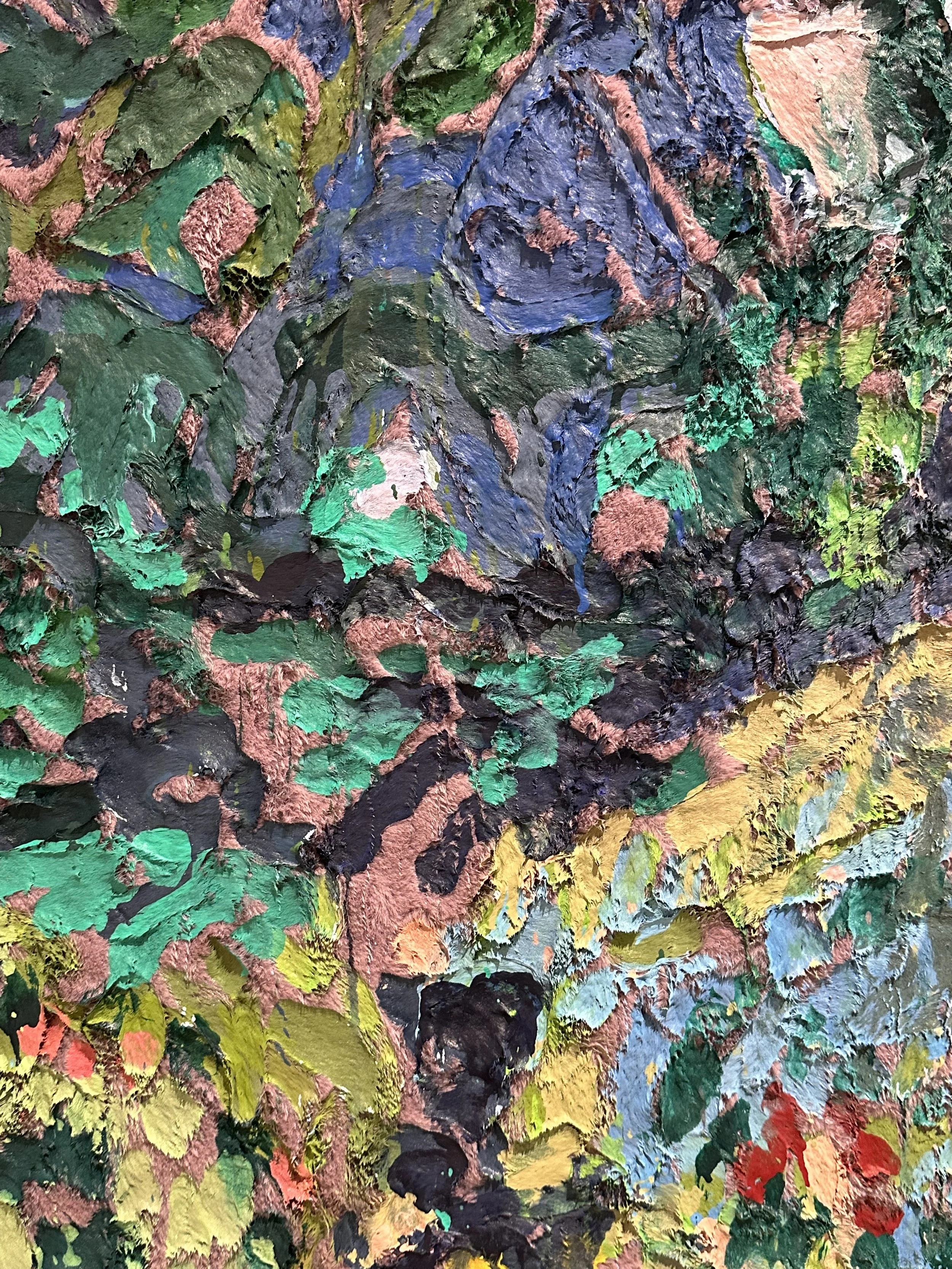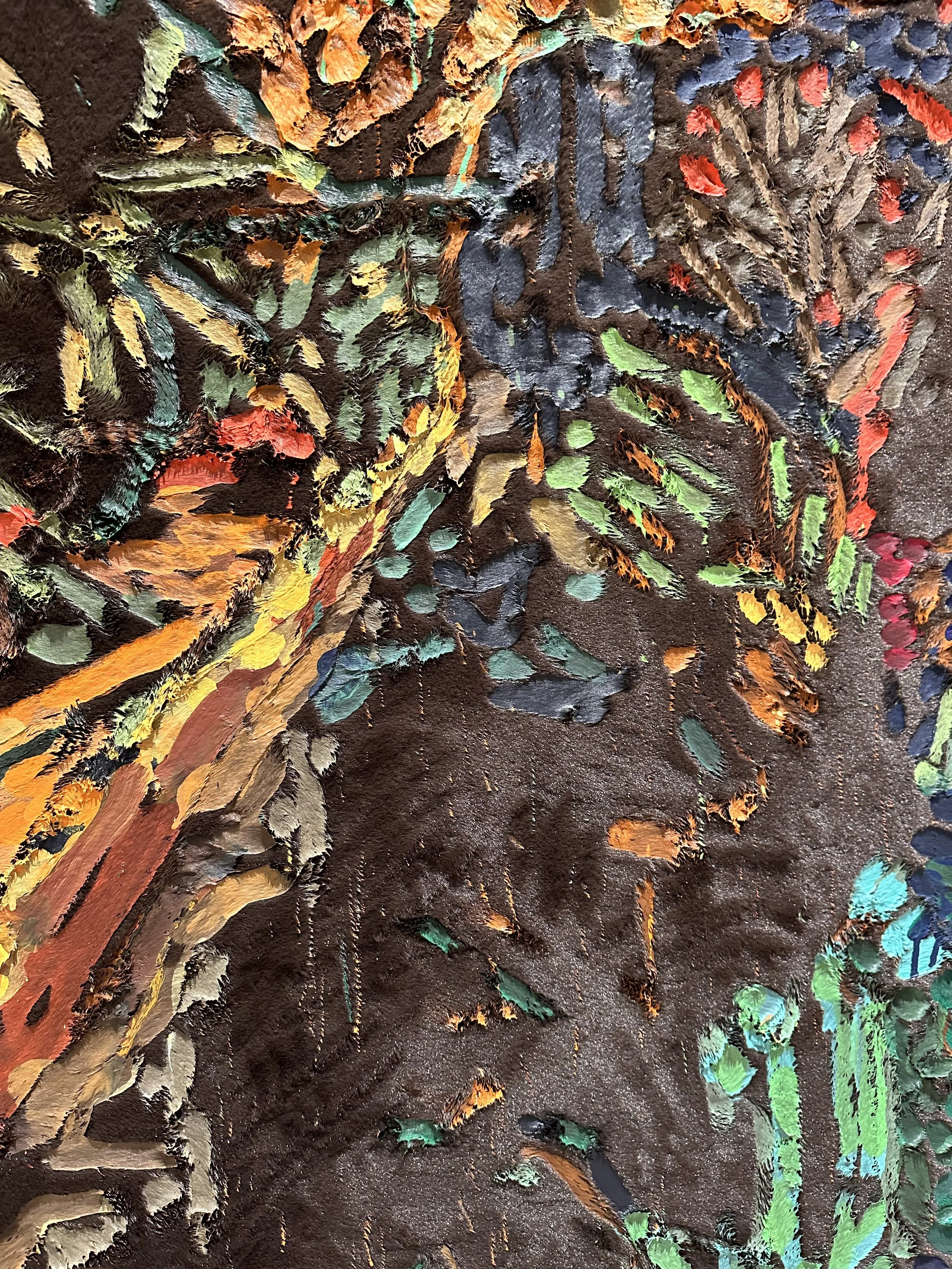Review: Au Bois D’Amour. Claire Tabouret at the Institute of Contemporary Art (Miami, FL)
The transition from Summer to Fall is by no means perfect in Miami. It’s still suffocatingly humid, and there are new condominiums rising by the second. Yet as the temperature dips below its seemingly-eternal 100° F, the clouds and crowds part to let enough sunlight shine over the drying remnants of another messy, stormy season in the city. Although the Southeastern coast never experiences more than a week’s worth of a cool breeze, the air hits just right when solitude is made accessible in a chaotic urban center. It doesn’t cancel out the heat, it simply feels easier to simply exist. It’s with this in mind that Au Bois d’Amour, Claire Tabouret’s solo exhibition at the Institute of Contemporary Art nestled in the core of Miami’s Design District, feels like an extension of this forgiving moment in the sun.
Comfortably spread across two galleries on the first floor, the first of which welcomes visitors to the museum, it’s immediately clear that Tabouret’s landscapes aren’t meant to be consumed with a singular glance from afar. In fact, each bois d’amour or “forest of love” welcomes neither a walk nor a crawl, but an intimate stroll, and invites one in with the promise of solitude and intimacy. There are at most two pieces on each wall, size allowing, and each is equal parts austere and sensually-provocative. Despite the fact that fur and elegance haven’t been synonymous since the 1970s, Tabouret successfully transforms fur into a foundational layer akin to underpainting, affording each work its own identity-marker in this survey of natural sumptuousness. The tones in the exhibition range from seriously cool, to dark and melancholy, to soft and warm. Coupled with delicate and minimal paper pieces, Au Bois d’Amour is an embodiment of the interplay between cycles in nature as well as those within human animals.
Tabouret’s works present a deep and sensorial exploration buoyed by this innate harmony, much like that of a forest settling into itself, or even resetting. Mirroring the parts of a human’s core that yearn for a return to nature, this is in part possible because of an instinctual gesture and the ways in which the colors sprawl over each rug or piece of paper. The artist’s thick strokes flow through each piece as if she has run paint-loaded fingers over and through a blank space and allowed herself the freedom to enjoy the feeling with abandon. Each point wherein the rug puckers and bleeds through furthers the idea that she doesn’t have a need for precision or purity of sight, almost as if one is meant to lose themselves in parts, gradually baring themselves throughout the exhibition.
There are thoughtful processes at play in tandem in each work: labor and scale, balance and divergence, simplicity and perfection. Tabouret skillfully fuses physical and emotional weight via color with the same tender ferocity through which she invokes both Impressionist elegance and the unbridled rawness of abstraction. It’s within Au Bois d'Amour (violet), the playful albeit imposing crowning jewel of the first gallery, and its spiritual woven counterpart Au Bois d'Amour (vert) in the next gallery that this is realized. (violet) can be taken to represent a grand and complex interpretation of nature as unserious; patches of vibrant lilac fur peeking out connote a lighthearted mystique or cheekiness lurking from under muted green and earth tones of her creation. (vert), though propped up on a low, slanted pedestal, is a rug made of New Zealand semi-worsted wool and silk, which means that the yarn is spun tightly and rendered smooth and durable. Rather than playing to the flat and decorative qualities of area rugs made from this material, the deep blues and pockets of an almost-amber orange in (vert) solicit meditations on a profound need for inner peace and, moreover, privacy.
It’s important to consider that Tabouret is not playing God or natural realist, and she isn’t pretending not to position herself as a creator, either. She instead capitalizes on the observation that to be alive is to feel, as it she’s humoring her own desire for sunlight in the canopy of everyday life. Thus, what a viewer sees is not simply a landscape, but an intentional evocation of the natural messiness-cum-liberty of the natural world, that which humans belong to despite the structure in our daily lives. And though this structure has come to be normalized as constructed, it’s vital to remember that structure is naturally occurring in the same vein. Each element of Au Bois d’Amour is textured, imperfect. These works are real, and they’re raw, and dizzyingly rich because Tabouret has allowed herself to be.
Written by Maria Gabriela Di Giammarco for Almine Rech’s “Newsletter 34,” 2023.
Au Bois d’Amour was on view at ICA Miami from May 5–November 12, 2023.









